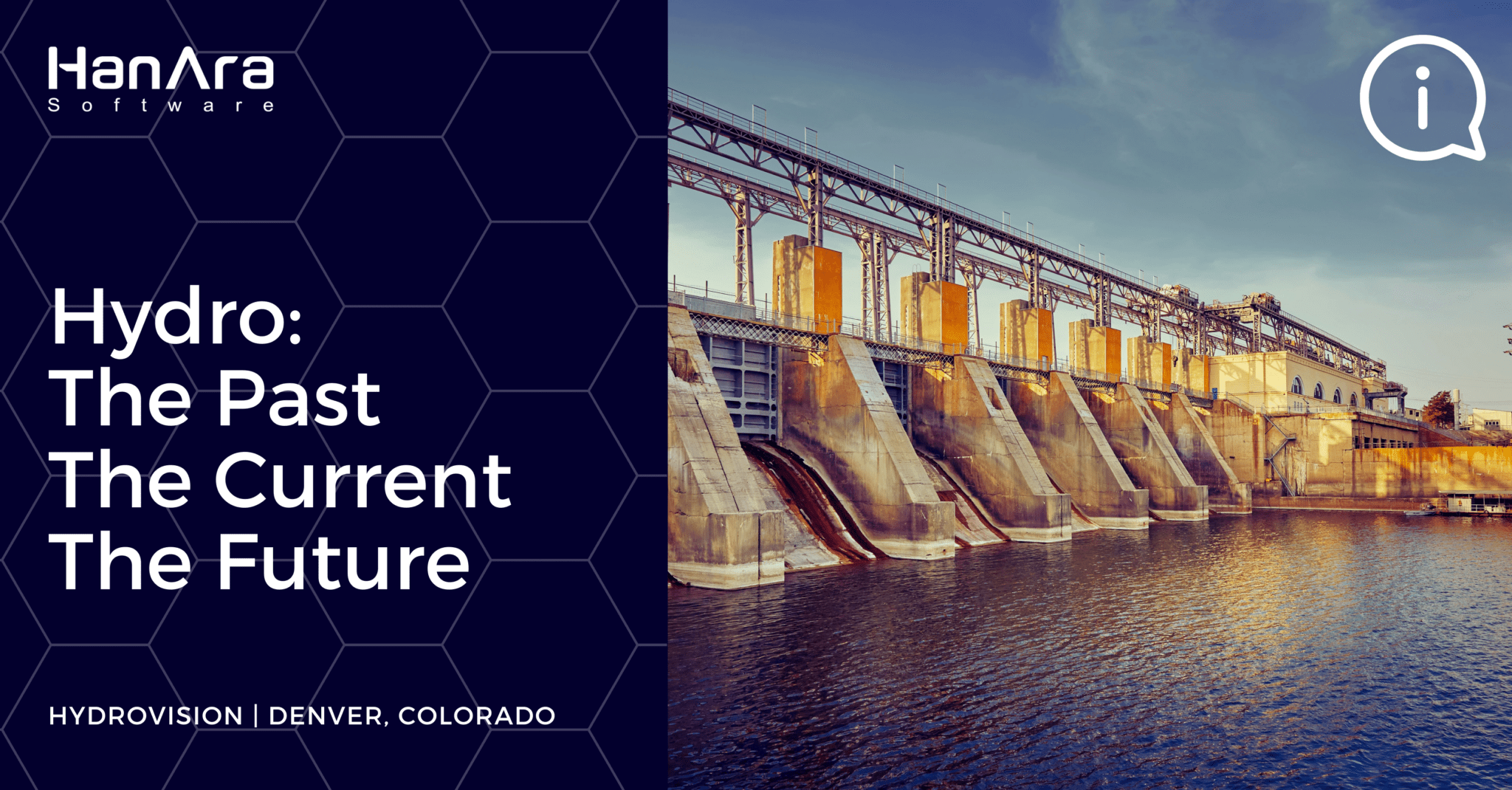It has been a busy month of conferences for the HanAra team! We were in Denver for HydroVision 2022 a couple of weeks ago, where we had the chance to discuss the future of hydro generation. During the conference, global industry experts discussed current operations and how the industry will supply reliable and sustainable electricity. This year the conference focused on how the industry will continue to strive to be visionaries.
But what does it mean to be a visionary? For HanAra, it starts by looking at the past and the current state to envision a better future. So, let us look at how we can be hydro visionaries.
The Past
The electrification of the United States in the 1800s stood for a time of innovation and transformation. And hydro was a big part of it. In Grand Rapids, Michigan, a water turbine helped illuminate a theater. From there, engineers harnessed the power of one of the seven wonders of the world, Niagara Falls, to light city streetlamps in 1881. And in 1893, the Redlands Power Plant in California was the first three-phase alternating current power to come online.
As Austinites, we of course must highlight the US first in our own backyard. In the late 1880s, the first hydro-designed dam was built across the Colorado River in Austin, Texas.
For the next century, the US built increasingly more hydro plants across our rivers. The goal was to supply cost-effective and reliable electricity in the United States. And by the 1970s, most hydro plants that are still in operation today were built. These systems have had upgrades, repairs, and improvements over the years. In fact, the hydro fleet spent $9 billion USD from 2007 to 2017 on turbine and generation upgrades and refurbishments.
Yet, the history of hydroelectricity was during a time of innovation but not a time of digital transformation. The industry has a visionary spirit and has inherent obstacles to overcome, including legacy and aging infrastructure.
The Current
Hydroelectricity now is approximately 6.3% of US electricity according to the US Energy Information Administration. When looking at US renewable energy, this percentage increases to 31.5%, accounting for the highest renewable type. In total, 1,450 conventional and 40 pumped-storage hydropower plants are across the United States.
Of the 50 states in the United States, 38 states have hydro capacity, including our home state of Texas.
Though a simpler process than some of the other types of power generation, hydro faces the same challenges the overall power generation industry faces.
- An aging workforce with significant organizational and operational knowledge is soon retiring. This fact leaves organizations with a skill and knowledge gap.
- Climate change continues to put significant demands on the electricity grid while changing and shifting past normal operational environments. The extremes put added stress on the equipment and operations.
- Plants must do more with less while improving their security and sustainability standards.
These challenges and many others require innovative solutions created by experts and visionaries.
The Future
As an artificial intelligence organization, we will focus on what we know—data and decision-making—for the future of the hydro industry. Looking at the current infrastructure and challenges the industry faces, we see a future of systematic and informed use of equipment data. In the United States, there is a spectrum of automation at hydro sites. Some are fully automated and send data continuously to a centralized monitoring center. Others still have manual readings at scheduled times on site.
Regardless of where hydro sites are currently on the digital transformation spectrum, we envision an industry that uses data to ensure hydro generation is a part of the next century’s power generation. Here are some things we see happening (if not already) in the next few years for the industry:
- Centralized Data Infrastructure: In the coming years, sites will continue to automate instrumentation and controls. And for hydro sites a part of a large fleet, this information will be available not just at the site but across the system and fleet. By having a centralized location for its data needs, the industry will have more information to make data-informed decision-making for operations and environmental monitoring.
- Real-Time Equipment Monitoring: with the addition of sensors and automation, the industry will have a clearer view of the operations of equipment. This can be for legacy or new equipment. With limited budgets but increasing power demands, hydro sites are replacing legacy systems while looking for ways to lengthen their current equipment’s life (RUL). Asset performance management and condition-based monitoring solutions will help organizations find potential and hidden failures in advance to keep the equipment up and running.
- Enhanced Cybersecurity: as hydro is still a significant source of renewable energy in the United States, it will also be a cyber target. Along with the addition of sensors and automation, improved cybersecurity will be a part of these upgrades. Having data insights is crucial, but if this comes at the cost of a security breach, there is no future. As a result, equipment and automation upgrades will have to go hand in hand with cybersecurity upgrades.
Learn More
Missed us at HydroVision 2022 and are interested in learning how we help hydro generation sites improve operations, reach out to us now. We help provide users with the necessary data insights to transform an organization’s vision into reality.
